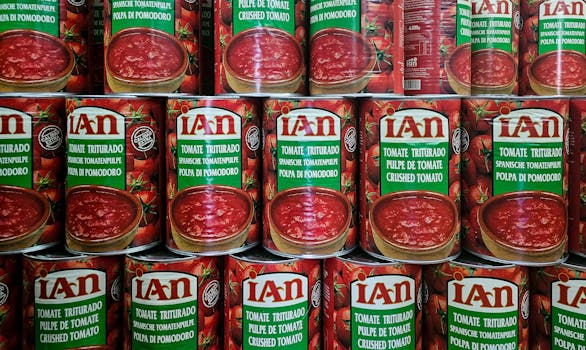Household Economy
Laundry Hacks That Reduce Energy and Water Costs: Your Ultimate Guide
Save money and resources with real-life laundry hacks. Cut your energy and water bills through smart, simple routines, efficient machines, and habits anyone can start using right away. Read the full guide now.
Advertisement
When you fold a t-shirt fresh from a dryer, do you ever wonder how much energy and water it took to get it that clean? There are laundry hacks everywhere, but not all of them are as practical as they sound. Some actually help reduce your monthly bills, while others simply promise a lot without real benefit.
The reality is your laundry routine impacts more than your clothes. It shapes your utility costs, your environmental footprint, and even how fresh your living space smells. Little changes add up quickly—sometimes before you notice.
If you’ve been itching to trim your energy and water expenses, this guide delivers kitchen-table strategies anyone can use. Jump in to discover tips, habit tweaks, and proven laundry hacks requiring zero guesswork or guilt.
Prioritize Cold Water Washing for Most Loads
Switching to cold water cuts energy use with every load. You’ll stop wasting heat on cycles that textile experts say work fine cold, especially for casual clothes and every-day linens.
Your energy bill reflects this choice almost immediately. Clothes fade less, fibers break down slower, so your wardrobe lasts longer too.
Spot-Treat Stains Before Washing
A gentle approach beats hot-water brute force. Pretreat visible spots with a dab of detergent or a specialized stain remover, then let it sit before adding to your regular load.
This copy-paste habit means you can skip energy-hungry sanitizing or re-wash cycles. Think: “If I can see it, I spot-treat it.” You’re controlling the outcome, not leaving it to chance.
Confidently targeting stains keeps you from running hot or long cycles unnecessarily. Your water and power savings multiply with this deliberate step.
Cold Rinse as a Default Setting
Set your washer for a cold rinse every time—no exceptions. Hot water might seem like a cleaner choice, but tests show cold rinses remove residual detergent and dirt equally well.
Your utility meter barely moves with this adjustment, which is the practical definition of a ‘set it and forget it’ laundry hack. If you always reach to double-check the dial, consider putting tape or a sticky note to remind family members.
By making cold rinse non-negotiable, you’ll build a habit that consistently trims energy use each week.
| Action | Energy Use | Water Use | Top Takeaway |
|---|---|---|---|
| Cold Wash | Low | Standard | Use on daily loads for savings |
| Hot Wash | High | Standard | Reserve for heavily soiled or bedding |
| Cold Rinse | Minimal | Standard | Set as your default |
| Extra Rinse | Minimal | High | Skip unless needed |
| Pre-Treat | None | None | Reduces need for hot cycles |
Batch Laundry Loads for Fewer, Fuller Washes
Combining clothes into larger, properly loaded washes slashes both water and energy waste. Each cycle you skip saves resources and extends your machine’s lifespan.
This approach is similar to meal prepping—a little planning saves time, money, and worry all week.
Balance Load Weights for Efficiency
Load size matters. Filling the drum three-quarters full optimizes both cleaning efficiency and energy use. Cramming it full reduces performance and can damage clothes.
A well-balanced machine vibrates less and needs less water to agitate properly. If you hear thumping or see the washer rock, redistribute your load.
Mimic the approach: “Two pairs of jeans, three towels, the rest t-shirts.” Getting this mix right keeps energy use in check automatically.
- Combine towels and lighter items to avoid overloading just one fabric type. This method ensures an even wash and efficient energy use—always check for balanced weight before pressing start.
- Delay laundry until you have enough for a full, balanced load. Waiting one extra day often means one less weekly cycle, which saves both water and time in the long run.
- Check for hidden socks or lightweight items under larger pieces. Fill gaps with small items so the drum works at peak capacity; this simple trick improves agitation and saves resources.
- Pair similar colors and fabrics: jeans with jeans, workout gear together. It ensures the right settings for each load, reducing rinse cycles and unnecessary heat application while keeping costs down.
- Resist washing just one or two items. If immediate cleaning is needed, handwash instead—your washer’s energy and water demands remain high regardless of a tiny load size.
Smart batching pays off, and it’s satisfying to see fewer laundry days on your calendar. Utility savings show up with your very next bill.
Adopt a Weekly Laundry Schedule
Set specific days for doing laundry. For example, designate Wednesdays and Saturdays for all household laundry. Tag team with family members to keep cycles running promptly.
A routine helps everyone consolidate loads instead of running small, spur-of-the-moment washes. Print a schedule and post it near the machine to keep the system visible.
- Assign a laundry day for each family member. If two share a day, ask them to check loads together before starting.
- Track laundry needs with a dry-erase board in the laundry room. Mark each cycle so you don’t lose track of full loads waiting to be done.
- Remind household members of the batching rule. No one starts a load unless the basket is at least seventy-five percent full—this simple threshold curbs waste.
- Limit emergency weekend or late-night loads. Save water and energy by waiting for regular laundry days, even if that means getting creative with your wardrobe between wears.
- Check the lint filter and washer settings at the start of each cycle. An efficient system naturally avoids overuse, saving resources every week.
Your consistent efforts shape new habits, making energy and water savings effortless and automatic.
Shorten Washing and Drying Cycles for Quick Wins
Choosing express or eco-functions on your washer or dryer cuts run time and saves resources. Clothes clean up just as well—unless they’re extremely dirty or stained.
Efficiency settings are designed for lightly soiled items, so you don’t have to second-guess their power.
Try the Express Cycle for Everyday Loads
If your washer offers a quick or thirty-minute cycle, test it on t-shirts, socks, or summer linens. Compare results against your regular setting—the difference is usually negligible for less greased items.
This habit stacks up savings fast. Hit “express” for your after-work outfits or kids’ jersey loads. Next time, pair it with colder water for double savings.
The analogy here is “fast food vs. home-cooked.” Both get the job done, but one saves energy and water with no drop in quality for routine needs.
Skip Dryer Time Using Spin and Air
Higher spin speeds wring out more water. Club this feature with line or rack drying: clothes emerge less damp, so air drying goes quicker.
Use the extra spin function for towels or denim. They’ll come out nearly dry, and your dryer uses less power if you finish there. This hack is a bill-slasher with visible results.
Think of it like wringing out a dishcloth before hanging it—the less water, the faster it dries. Copy the method each time, and savings stack up naturally.
Upgrade to Efficient Machines and Detergents
Replacing an old washer can cut water use in half. Many high-efficiency (HE) washers drop energy needs further, especially when you use HE-labeled detergents as directed on the label.
Modern machines pair water sensors with better washing action, so you get cleaner results using less. These investments repay you over time with lower bills and simpler routines.
Shop for ENERGY STAR Appliances
Look for the ENERGY STAR label when buying a new washer or dryer. These models meet strict efficiency criteria—less energy per cycle, using sensors to detect soil and weight.
Ask: “Is there a rebate for efficient washers in my area?” Many local utilities offer cash back or discounts to switch. You get an upgrade along with direct savings.
Include the laundry hacks of selecting the shortest compatible cycle for everyday loads. The new machine rewards the habit with perfect results and less resource use.
Choose the Right Detergent—and Measure Carefully
HE washers require lower-sudsing detergent formulas. Using regular soap invites residue, longer rinse cycles, and wasted water. Switch to a trusted HE brand—then, follow the measurement instructions exactly each time.
Use the marked cap or scoop instead of guessing. Too much detergent makes rinsing harder for the machine, using more water and sometimes leaving residue on clothes.
Encourage everyone at home to pour and measure with care. If you see too many suds or stiff fabrics, adjust the amount down a notch next load.
Air-Dry With Purpose: Save Energy Indoors and Out
Air-drying isn’t just for sunny days or big backyards; it slashes energy use even in small apartments. Use racks, hangers, or shower rods where sunlight or moving air can do the work.
This step saves money, but it also makes clothes last longer, since dryer heat can break down fibers.
Design a Simple Indoor Drying Setup
Install a folding rack or tension rod in your laundry area. Use hangers for shirts, and clip socks to the edges—leave room between items for airflow.
If your home feels stuffy, a small fan near the rack helps speed up drying. Place racks near windows for maximum effect, especially in winter or rainy weather.
Batch air-drying loads by schedule to avoid crowding your space. Rotate items halfway through drying for even results and less mildew risk.
Leverage Outdoor Breezes Smartly
If outdoor space is available, string up a retractable clothesline or use sturdy portable lines. Hang clothes by the hems; gravity helps water drip out faster.
Morning to midday is best—sun beats down hardest then, reducing drying time. If birds or pollen are concerns, shake items before folding or finishing in the dryer for two minutes.
Air-drying becomes a natural step when you plan for it. Keep clothespins in a handy spot near the door so no one skips this laundry hack out of convenience.
Clean and Maintain Laundry Machines Regularly
Routine maintenance stops your washer or dryer from guzzling extra resources. A clean filter or drum means smoother operation for the same effort.
If your machine smells musty or cycles seem sluggish, a bit of upkeep could restore lost efficiency—and prevent damage to your clothes.
Clean Lint Traps to Prevent Blockages
Remove lint after every dryer load. This isn’t just for performance; clogged traps hike electricity use and can even spark fires.
Vacuum around the lint area every month for all-in maintenance. If you spot slow drying or musty smells, check for overlooked lint deeper inside.
The best habit: “Clear trap before every cycle.” Leave yourself a sticky note until it feels as routine as shutting the washer door.
Run a Monthly Drum Clean Cycle
Use the washer’s cleaning mode—if available—or run it empty with a mix of hot water and white vinegar. Scrub inside and around the door’s gasket to remove detergent or mineral buildup.
Add this laundry hack to your monthly cleaning checklist. A fresh, residue-free machine shortens wash times and uses less water. Clothes also smell cleaner and last longer.
If you don’t have a “Clean” setting, just select the hottest option and add vinegar to the drum. Scrub with a soft cloth at the finish for long-term efficiency.
Make Laundry Routine a Household Habit
Shared responsibility multiplies savings. Invite every member of your home to learn these laundry hacks and play a role in the process. Consistency transforms these tricks into actual reductions on your bills.
Assign age-appropriate laundry roles, or rotate responsibilities weekly so everyone knows how to optimize each load—and spot mistakes before they add up.
Use Reminders to Build New Laundry Habits
Hang a step-by-step chart or checklist near your washing machine. Color code each step: sort, fill, measure, check temperature. A chart keeps family or roommates on the same page—no forgotten hacks.
Set phone alarms for regular machine cleaning or to remind you on scheduled laundry days. Once a habit, the reminders become backup, not necessity.
Rotate checklists quarterly to keep things fresh and avoid “chore blindness.” Engage kids with check marks or stickers if you want positive reinforcement around new tasks.
Share Success: Track and Celebrate Your Savings
Print or chart your energy and water bills monthly. Compare before and after adopting these laundry hacks. Seeing numbers drop is motivating for every age, turning routine chores into rewarding victories.
Set a family goal, like saving $5 per month or cutting one water cycle. Offer small rewards: movie night, extra screen time, choosing dinner. Reward consistency, not perfection.
Include savings in regular family chats, so everyone feels ownership of the results. It reframes chores as a team achievement, not an individual burden.
FAQs
What’s the best laundry temperature for most clothes?
Cold water is the top choice for everyday clothes and lightly soiled items. It protects colors, saves energy, and still cleans effectively, except for very soiled linens or heavily stained fabrics.
Which items absolutely require hot water?
Bedding for someone sick, cloth diapers, or towels used for greasy spills usually warrant a hot water wash. These need deep sanitizing—everything else is typically safe in cold cycles with a quality detergent.
How do I air-dry when living in a small space?
Use folding racks, over-the-door hangers, or a shower rod for air drying in bathrooms or spare closets. Narrow spaces demand small loads, so batch laundry for efficient drying and rotate hanging spots for airflow.
How can I stop detergent residue buildup in my washer?
Switch to high-efficiency detergent, use less than you think, and run a regular cleaning cycle with hot water and white vinegar to dissolve residue. Wipe the drum after each clean and leave the door ajar between loads to vent moisture.
Do fabric softeners impact machine longevity?
Liquid softeners sometimes leave a slippery film inside drums, which reduces efficiency and uses more water over time. Try wool dryer balls for softness—they speed drying, cut static, and avoid clingy residue inside the washer and dryer.





